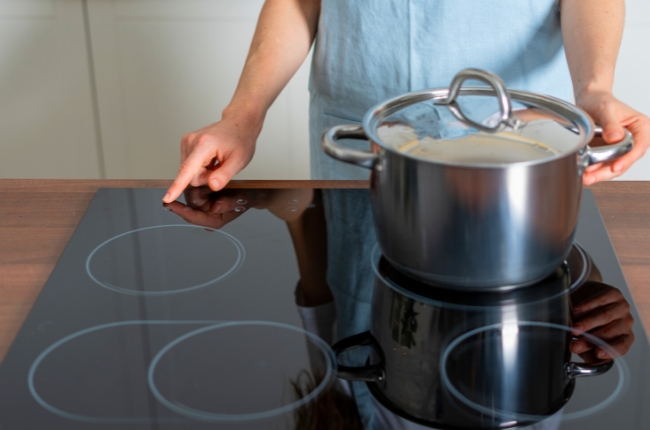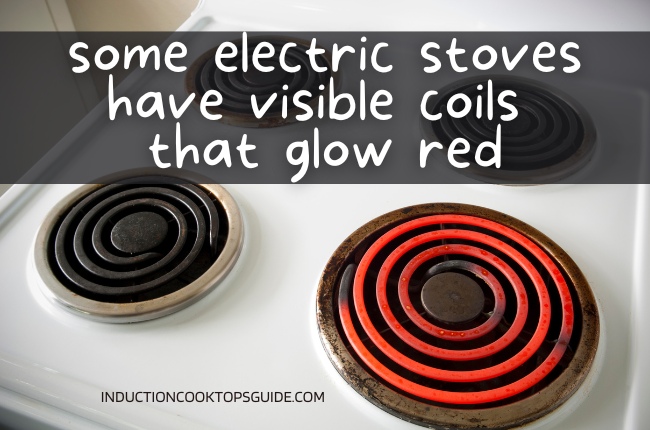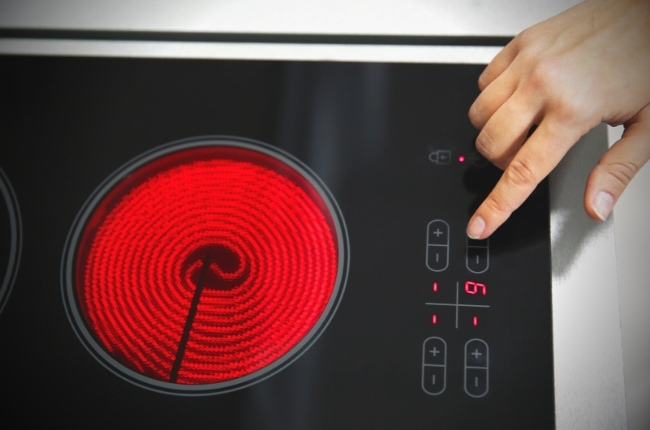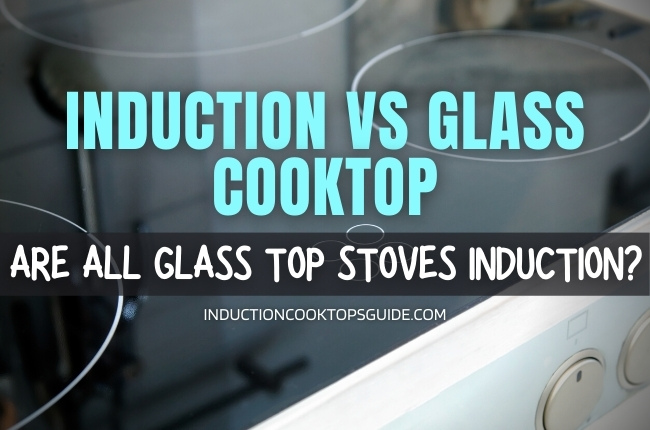Cooking has evolved significantly over the years, with new technologies introduced to simplify and improve the cooking experience.
Two such technologies are induction cooktops and glass cooktops. Many people confuse these two cooktops, assuming they are the same.
These questions might boggle your mind on the topic of induction vs. glass cooktop: Are all glass top stoves induction?
If they aren’t, which is better? How do I tell one from the other?
It might be overwhelming now, but you’ll better understand what they are after this article. So, go ahead and find out!
Is induction cooktop the same as glass cooktop?
It’s understandable why you may find glass cooktops a synonym for induction. They both have smooth surfaces, after all.
However, this comparison is entirely incorrect. Why, you ask?
Well, that’s because induction cooktops are a type of glass cooktop!
What is an induction cooktop?

An induction cooktop is a stovetop that uses electromagnetism to heat the cooking vessel directly. Unlike traditional gas or electric, the surface of induction does not have to heat up first for the vessel to warm.
Once you plug in your induction cooktop, an alternating current produces an electromagnetic field that affects the ferromagnetic components of your pots and pans, resulting in heat energy.
From this science alone, you get incomparable efficiency in your cooking time and energy usage. Subtle changes and precise temperature control are also possible since you don’t have to wait for the stovetop to respond to the temperature change first.
Moreover, unlike those in gas and electric cooktops, you don’t have to worry constantly about fire hazards or accidental burns.
The surface of an induction cooktop will remain generally cool unless set previously at a high temperature. Even then, safety features are built into the appliance nowadays to prevent accidents altogether.
Induction cooktops are also sleek and add a touch of modernity to the kitchen. In this aesthetic feature, you may cross paths with glass cooktops!
While induction and glass cooktops look the same, you’d be better off knowing they can’t really be compared.
Glass cooktops can have different heat sources, not just induction.
However, since induction cooktops are a league on their own nowadays, people got used to separating them from other types of glass cooktops.
Instead, the term “glass cooktop” is often associated with similar-looking electric stovetops rather than the overarching umbrella group to which induction also belongs.
You must avoid the mistake of assuming that every glass cooktop is induction!
What is considered a glass cooktop?
A glass cooktop, as the name implies, is every cooktop that has a tempered ceramic glass surface that lies above the heating element.

Whenever you get confused about what can be considered a glass stovetop, remember this definition. They describe a larger group of cooktops with different heat sources.
Glass cooktops are not made entirely of glass.
This is not the tempered glass you know from fireplace doors. Instead, glass cooktops available in the market today are composed of both ceramic and glass—creating a more durable and less heat-resistant material that allows heat transfer quickly.
There is no ceramic vs. glass cooktop comparison since almost all flat stove tops consist of a blend of ceramic and glass. Hence, the term “ceramic glass”.
Are all electric stove tops induction?
Again, electric cooktops and induction cooktops are different!
Two things may contribute to their similarity: their design and energy source.
There are electric cooktops with exposed burners rather than a glass surface. No version of induction has an exposed heating element. All induction cooktops are glass cooktops; not all electric stovetops are.

The design for modern glass electric cooktops or radiant cooktops does not differ much from induction cooktops which are also made of the same ceramic glass. Often, it’s a sleek, smoothened, black surface with burner zones to indicate where you can place your cooking vessel.
In essence, the power source of both electric and induction is electricity, not gas. In the simplest of classifications, you might put them together in a group, as opposed to stovetops that use gas or propane.
But that is all and nothing more!
The science behind electric stovetops and induction is vastly different.
The former uses electricity to heat a metal coil to heat the glass surface, which transfers to the pot above it and, consequently, to the food. The latter skips a step and heats the pot directly through an electromagnetic field.
Though both share the same smooth surface, cleaning spills and grease are easier on induction.
Electric glass cooktops, unlike induction, remain hot to the touch after cooking. To prevent burns, you have to wait for an adequate time for it to cool down. At this point, some spills have already hardened or crusted over.
With induction, you get faster cooking times and efficient energy use than when you use electric stovetops.
If you also aspire to be a chef, the superior control of temperature is something induction can give you!
However, induction comes at a more expensive price point and costly professional repair. It also requires a particular set of cookware, i.e., it must contain a good amount of iron to work on induction cooktops. Cast iron and magnetic stainless steel are great examples of this.
Electric cooktops with exposed burners are compatible with round-bottomed cookware like woks, unlike induction; they also do not require a certain pot size to match a specific burner zone.
Despite having a modern look, glass electric stove tops do not require a steep learning curve— induction may.
So if you prefer a sleek design at a cheaper price, an electric cooktop is still a great choice. You may not have the advanced technology, but it can still offer you a reliable cooking experience.
How to tell the difference between induction and electric cooktops?
One way you can recognize a glass electric cooktop is the burner. They can either be exposed or covered with ceramic glass.
The glass-electric ones have an orange-red burner zone to indicate that the power is on and the surface is hot. Even without this orange glow, you can still observe significant heat from the stovetop. With induction, the rings still exist, but they do not emit a glow or too much heat.

To point out the efficiency difference between the two, do the boiling water test.
A researcher at National Renewable Energy reported that induction stovetops can boil 500 mL water at 85% efficiency compared to only 70% efficiency inferred for electric stove tops; the number on the latter still depends on the pot used. This gap can be attributed to the heat lost to the air as boiling time increases.
An induction cooktop, especially the high-end version, allows for incremental temperature control. This translates to more settings on your control panel.
Some induction cooktops are so advanced that they have a pre-set temperature depending on the food you are cooking; some have a Wifi connect feature where you can control the settings through your phone! Most have an array of sensors to indicate overcooking, residual heat, timers, and pan detectors.
While modern electric cooktops also boast various safety sensors, not all have the extensive features of induction cooktops.
How do I know if my glass-top stove is induction?
A good sign to recognize is the remarkably cool surface of the induction cooktop. Even after cooking, it will only be slightly warm to the touch. Thus, you lessen the risk of severe burns.
The telltale sign of an induction cooktop is its pickiness with compatible cookware.
If you place a flat, ferromagnetic pan on an induction cooktop, the vessel will heat up once you turn the power on. If you put non-ferromagnetic material onto it, nothing happens. The pan or pot just stays cool even when you increase the temperature setting of the cooktop.
How about the reverse? Can induction cookware be used on glass-top stoves?
Sure! This “pickiness” does not exist for other types of glass cooktops like electric.
Since heat is transferred through conduction, any material will do. An example of what you can use on other glass cooktops but not induction cooktops is copper and aluminum.
Do note, however, that a glass cooktop is sensitive to rough materials that can accidentally scratch the surface. So although cast iron is a perfect match for your cooking preference, the heavy material can cause permanent damage on its surface.
Which is better: induction or ceramic glass cooktop?
Since you already dove deep into induction and its benefits, let’s talk more about other ceramic glass cooktops.
When viewed like a published paper, ceramic glass cooktops can be cited as “induction et al.” While there are other glass cooktops, the remaining ones use the same principle of heat transfer. Induction, alone, gets the trophy for being unique.
Compared to induction, other ceramic glass stove tops suffer from the same heat loss, safety hazards, and lack of precision over temperature control. In a battle between glass ceramic cooktop vs induction, induction will always come out with better benefits.
Be that as it may, let’s discuss the advantages of non-induction ceramic glass cooktops. After all, induction might sound better but not be better suited for you!
- Radiant cooktops come second to induction when glass stove tops are mentioned. There’s no open flame, so there’s less risk of fire. Like induction, some radiant cooktops have a bridge-over feature where two zones can be connected to accommodate a larger pot. You may find that some refer to ceramic glass cooktops as entirely synonymous with radiant cooktops. Yet again, if you look closely, ceramic glass cooktops are a larger group of similar-looking surfaces but with different heat sources.
- Halogen cooktops rely on tungsten halogen tubes as heating elements. Unlike a radiant cooktop’s metal coil, the heating element is designed to transmit 80% of infrared radiation to the glass above it. A combination of radiation and conduction results in faster heating time. However, this also makes for expensive electricity bills.
- Gas-in-glass is also a modern addition. An example is the Izona CookSurface with individual burners with a retracting feature, i.e., it lifts the burners when used and retracts them when not. But for the sake of adhering to the definition of glass stovetops, you can consider this as a distant relative that’s also as sleek-looking as the ones you already know.
Summary
All induction cooktops are glass stove tops but not vice-versa.
Glass stove tops are made of ceramic glass and can also include radiant and halogen types.
Induction uses electricity but does not work like modern electric stoves with similar designs.

Leave a Reply